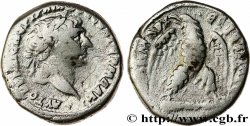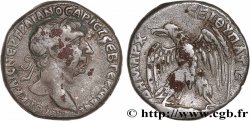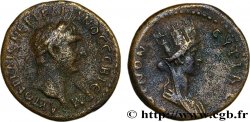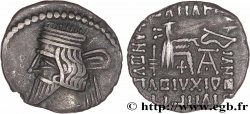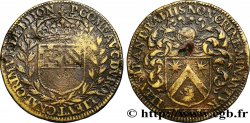Live auction - bpv_737832 - TRAJANUS Tétradrachme syro-phénicien
You must signin and be an approved bidder to bid, LOGIN TO BID. Accounts are subject to approval and the approval process takes place within 48 hours. Do not wait until the day a sale closes to register. Clicking on "BID" constitutes acceptance of the terms of use of cgb.fr private live auctions.
Bids must be placed in whole Euro amounts only. The sale will start closing at the time stated on the item description; any bids received at the site after the closing time will not be executed. Transmission times may vary and bids could be rejected if you wait until the last second. For further information check the Live auction FAQ
All winning bids are subject to a 18% buyer’s fee.
All winning bids are subject to a 18% buyer’s fee.
| Estimate : | 400 € |
| Price : | 280 € |
| Maximum bid : | 280 € |
| End of the sale : | 09 July 2024 14:50:16 |
| bidders : | 3 bidders |
Type : Tétradrachme syro-phénicien
Date: an 16
Mint name / Town : Tyr, Phénicie
Metal : silver
Diameter : 25 mm
Orientation dies : 6 h.
Weight : 14,19 g.
Rarity : R1
Coments on the condition:
Exemplaire sur un flan irrégulier, bien centré des deux côtés avec les grènetis visibles. Très belle tête de Trajan. Revers de style fin. Belle patine de médaillier avec des reflets doré
Catalogue references :
Predigree :
Cet exemplaire provient de la collection de Michel Prieur
Obverse
Obverse description : Tête laurée de Trajan à droite (O*).
Obverse legend : .AUTOKR KAIS NER TRAIANOS SEB GERM DAK., (Autokrator Kaisar Neruaos Traianos Sebastos Germanikos Dakikos)
Obverse translation : (L'empereur césar Nerva Trajan auguste germanique dacique).
Reverse
Reverse description : Aigle debout de face sur une massue, manche à droite, les ailes déployées, la tête tournée à gauche, une palme dans le champ à droite .
Reverse legend : DHMARC. .EX. IS UPAT. S., (Dhmarcikhs Exousias IE Upatos s)
Reverse translation : (Seizième puissance tribunitienne, consul pour la sixième fois).
Commentary
Rubans de type 3. Cet exemplaire est illustré dans l’ouvrage de M&K Prieur, p. 167.








 Report a mistake
Report a mistake Print the page
Print the page Share my selection
Share my selection Ask a question
Ask a question Consign / sell
Consign / sell
 Full data
Full data
